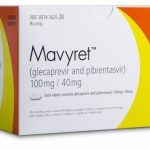
Contents
Neck Pain (Cervical Pain, Cervicalgia)
The neck (cervical spine) is made up of seven vertebrae, which surround the spinal cord and canal. Discs are located between these vertebrae, and nerves pass through the neck. Other structures within the neck include the skin, neck muscles, arteries, veins, lymph nodes, thyroid gland, parathyroid glands, esophagus, larynx, and trachea.
Neck pain can result from diseases or conditions affecting any of these neck tissues.
What are the neck muscles?
The neck contains several muscles that allow for movement and support the shape and structure of the neck. One of these muscles is the trapezius, which is located in the upper back. The trapezius muscles move, rotate, and stabilize the shoulder blade. There are also many other muscles in the neck that support the cervical spine and enable head movement in different directions.
- Longus colli and capitis: Responsible for flexion (lowering the chin) of the head and neck.
- Rectus capitis anterior: Responsible for neck flexion.
- Rectus capitis lateralis: Helps bend the neck to the side.
- Scalene muscles: Responsible for lifting the first and second ribs and aiding breathing.
- Levator scapulae: Moves the shoulder blade up and down.
- Rectus capitis lateralis: Allows for side-to-side neck flexion.
- Obliques capitis superior: Allows for neck extension and side flexion.
- Obliques capitis inferior: Assists with head and neck rotation.
Causes of neck pain
Neck pain can result from various disorders and diseases affecting the neck tissues. Examples include degenerative disc disease, neck strain, osteoarthritis, cervical spondylosis, spinal stenosis, poor posture, neck injuries (such as whiplash), herniated discs, pinched nerves (cervical radiculopathy), or infections leading to lymph node swelling and neck pain. Neck pain can also be caused by conditions that directly affect the neck muscles, such as fibromyalgia and polymyalgia rheumatica, or by uncomfortable sleeping positions. Neck pain may also be referred to as cervical pain or cervicalgia.
Risk factors for neck pain include participation in contact sports, motor-vehicle accidents, falls, and other activities that can lead to neck injuries. Preventive measures for neck pain in these contexts include neck strengthening exercises, neck bracing, safety equipment, and proper techniques.
Symptoms of neck pain
Neck pain is often associated with dull aching and can worsen with neck movement or head turning. Other symptoms that may accompany neck pain include numbness, tingling, tenderness, sharp shooting pain, range-of-motion difficulties, fullness, difficulty swallowing, pulsations, swishing sounds in the head, dizziness or lightheadedness, and lymph node swelling. Neck pain can also cause headache, facial pain, shoulder pain, and arm numbness or tingling.
Diagnosing neck pain
Medical professionals who diagnose and treat neck pain include general medicine physicians, orthopedists, rheumatologists, neurosurgeons, neurologists, ENT specialists, emergency physicians, physiatrists, sports medicine physicians, chiropractors, physical therapists, massage therapists, and acupuncturists.
To diagnose the cause of neck pain, doctors review the patient’s medical history and assess the location, intensity, duration, radiation, and aggravating or relieving factors of the pain. They also examine the neck at rest and during motion, palpate for tenderness, and evaluate the nervous system for any signs of nerve involvement. Further diagnostic testing may include X-rays, CT scans, MRI scans, myelograms, electromyography (EMG), and nerve conduction velocity tests (NCV).
Seek medical attention if neck stiffness is accompanied by fever, night sweats, headache, swollen glands, throat pain, chest pain, difficulty breathing, confusion, numbness or tingling in the arms or legs, severe or persistent pain, pain following an injury, or any other concerning symptom.
Treatments for neck pain
The treatment of neck pain depends on the underlying cause. Medical treatment options include rest, heat or cold applications, traction, physical therapy, local injections, topical pain relief, muscle relaxants, over-the-counter anti-inflammatory drugs, and surgical procedures. Self-care measures such as Jacuzzi treatment, neck pain relief exercises and stretches, neck pillows for sleep, and hot pads can also provide relief.
Alternative treatments for chronic neck pain may include acupuncture. In cases of severe neck pain or acute nerve injury causing weakness or numbness, surgery may be necessary.
The prognosis for neck pain varies depending on the cause. Most cases can be resolved with conservative measures, while more severe causes may require invasive treatments or surgery. Complete healing of strained neck muscles can take days to weeks, although whiplash injuries may take longer to heal.
References:
- Firestein, Gary S., et al. Kelley’s Textbook of Rheumatology, 9th Edition. Philadelphia, PA: Saunders.
- WorldWide Journal of Multidisciplinary Research and Development: "A Knowledge Based System for Neck Pain Diagnosis."
- American Association of Neurological Surgeons: "Cervical Spine," "Herniated Disc," "Neck Pain."
- Mayo Clinic: "Neck Pain."
- Cleveland Clinic: "Neck Sprain."
- Harvard Health Publishing: "Muscle Strain."
- BMJ Clinical Evidence: "Neck pain."
- Merck Manual: "Neck Pain."
- Hospital for Special Surgery: "Muscle Strain: Causes, Symptoms, Treatment"
- Illinois Bone and Joint Institute: "5 Common Causes of a Stiff Neck."
- Nemours Teens Health: "Strains and Sprains."
- OrthoInfo: "Neck Sprain."


